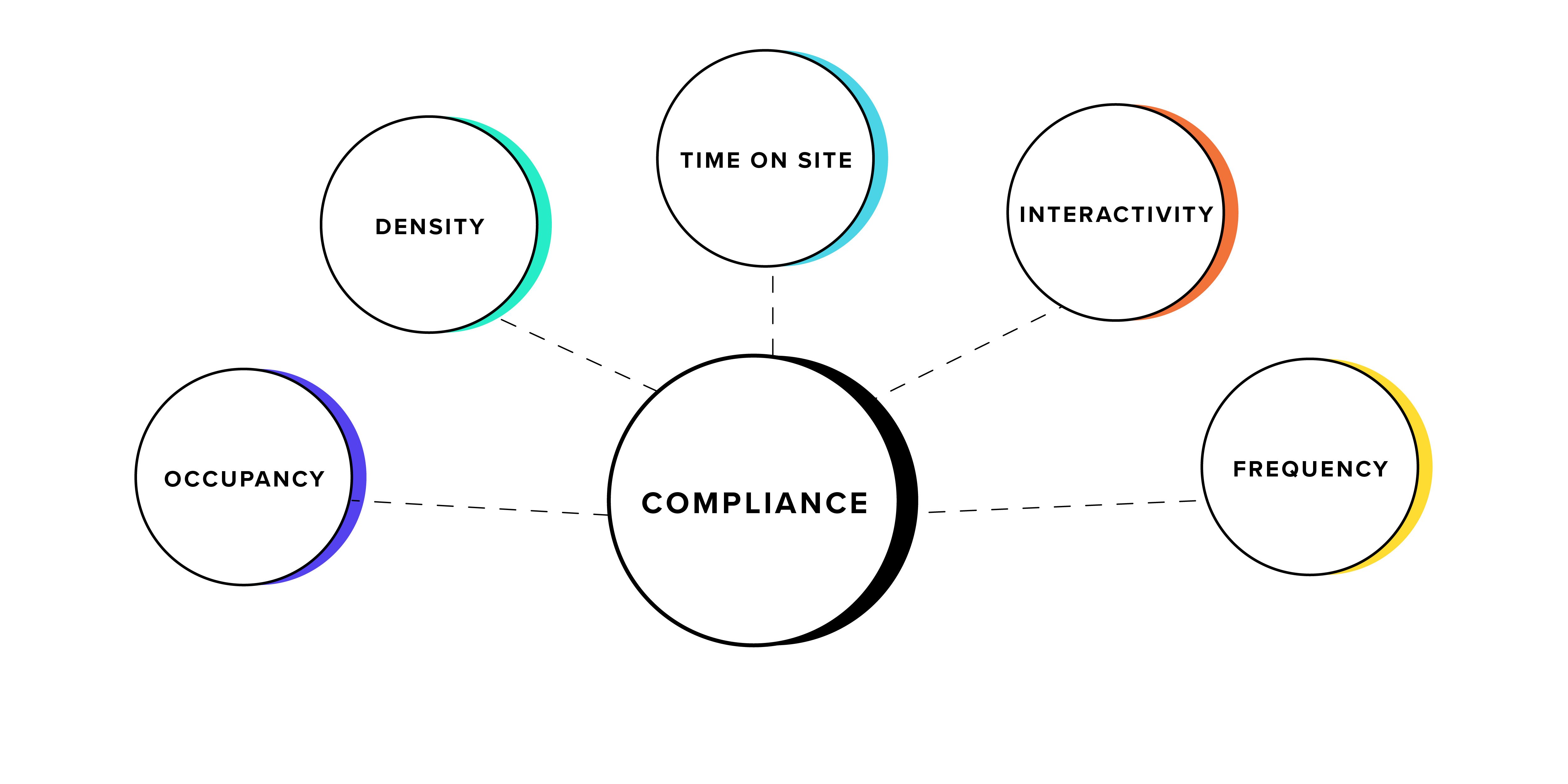Compliance, Capacity and Change
Figuring out who comes back to the office, and when, is only one part of the journey back to the office. Guidelines from the likes of the CDC, OSHA and public health authorities recommend everything from updating HVAC systems to enhanced cleaning procedures and creating both visual reminders and physical barriers to ensure people are willing and able to maintain physical distance.
So what happens when the physical nature of your office, the people in it, and legal policy collide? A new requirement of workplace and facilities teams emerges - corporate compliance data and reporting.
In larger organizations, corporate compliance has become increasingly invested in the return to work strategies and its data so that risks to business operations can be mitigated. The same data that helps real estate and operations teams assess how their office is occupied will also provide Compliance with data to assess risk and ensure new policies are adhered to. Accessibility and ease of understanding occupancy data will allow real estate teams to address compliance concerns with the utmost certainty of how occupancy looks in office spaces.
As corporate compliance plays a large role in mitigating risks, there are questions real estate teams can proactively address that may come their way. Corporate compliance will be interested in knowing what actions are happening that do not comply with new workplace rules such as when capacity thresholds have gone over, when people are not filling out health questionnaires, covid incidents in the workplace, and trends in return to office occupancy.

With so many sources of information to choose from, it is important to identify what is going to work best for your organization while staying compliant with data and privacy regulation. Badge count data to track occupancy has gained quite a bit of popularity, however analyzing this data can be especially complicated depending on how many entry and exit points there are in a building. The other challenge is that this data doesn’t surface where people are located at any given time. A much easier approach is to use an always-on solution like WiFi analytics to measure in real-time occupancy by building, floor and zones.
Having an automated solution and consolidated dashboard will require less work for corporate real estate teams by showing a more holistic picture of people movement limiting the amount of analysis required in comparison to receiving raw data. A consolidated dashboard will give you a true representation of how your workplace population uses the office that will last beyond pandemic needs.
Corporate real estate teams have an opportunity to step forward and become an epicenter of information across its organization. Stewarding not just the opening of the office, but the organizational strategies that will inform policy and work. Thinking about what other teams will need access to this data will help drive decisions around what type of IoT solution will be useful for return to office and beyond.

Accurate space utilization data through Wi-Fi?
We'll prove it to you.
See why industry leaders leverage InnerSpace to generate valuable insights that go beyond occupancy.

